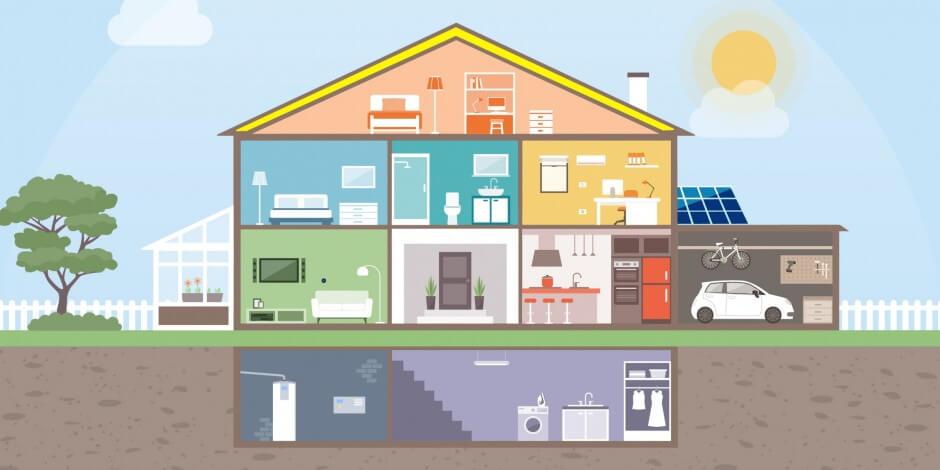It’s imperative to save energy while still living traditionally. When it comes to changing your lifestyle to make the world a better place, it starts with your home. Incorporating sustainable habits makes a difference to saving energy when they are applied everywhere, including your home and resetting the thermostat when required.
How do you incorporate energy saving habits? You start by building an energy-efficient home. An eco-efficient home saves electricity by controlling consumption, helping you to save money and help the planet.
Since the energy price is increasing, you can help lower your expenses with an Origin Energy Plan. Here’s how you can build an energy-efficient home.
Suitable surroundings
Always consider the location of your house before you decide to build new, including a good briefing of the landscape. A good orientation will help you decide how much sunlight is required for your house. The position of the house and the sunlight it receives impacts your heating and cooling expenses.
By making the best of the natural light you can reduce your energy bills. Talk to your architect about the different angles of the sun. The sun might be at a low angle during the winters and at a high angle during summers. A south-facing house located in a north-facing street could get a lot of sunshine during the day. Keep in mind the following things for maximising natural lighting.
Refined ventilation
An environmentally friendly house should have uninterrupted ventilation. This makes it easy to breathe comfortably and eliminates some usage of electronic appliances. A properly ventilated house is defined by strategically placed windows and manual systems. Well-designed doors and windows will provide the best ventilation and minimise the overall energy use inside to make an eco-friendly house.
Impactful landscaping
Landscaping is an element of design that allows the home to absorb less heat. In fact, thoughtful landscaping can reduce the temperature of your house by 6 degrees. You can use natural resources like trees with canopies near your house. If you want a tree that will block the sunlight in summer but allow the sunlight to enter the house during the winter, go for a deciduous tree. They are perfect all-year-round.
Moreover, make sure you plant your trees in the east, west and south sides of your home to protect the house from excessive heat. It is wise to get in touch with a landscaping company to help you through the procedure.
Installing efficient HVAC systems
Cooling and heating appliances consume the most energy in your house. Installing HVAC systems like air conditioners or heaters can increase your energy consumption and bills, hindering the energy-efficiency of your home.
Therefore, it is wise to install an efficient system that consumes less energy and helps reduce your energy consumption. You can look for smart functionalities or high SEER ratings to choose the right system.
The right lighting systems
Installing neon lights or bulbs might seem like a huge investment, though it is a fact that these fixtures can reduce your overall cost of energy consumed. This will not only make your house efficient but also cut down on your energy bills.
Summing up
In addition to the points stated above, you can also install building envelopes that will protect your home from excessive heat or cold. You can also install small potted plants for fresh air and a cool vibe. This would increase the ventilation and make your space breathable. When building your energy-efficient home, it is important to consider the advice by your architect.
Jordan Avery
Related posts
Stay connected
Today's pick
- Things to Remember While Designing Your Custom Modular Kitchen in GurgaonGurgaon now known as Gurugram is the second largest city in the state of Haryana and is a reflectiossn of an ideal modern city with futuristic goals. Witnessing rapid urbanization, it has also emerged as a hub for contemporary homes, with homeowners seeking innovative and... The post Things to Remember While Designing Your Custom Modular […]

